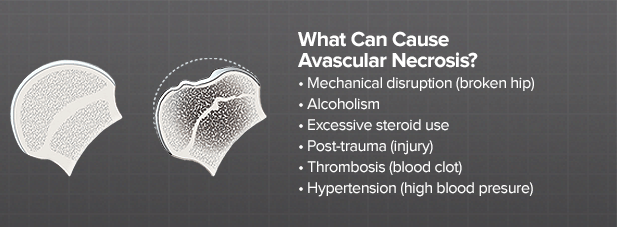
Avascular necrosis (AVN), also known as aseptic necrosis or osteonecrosis, is a condition resulting from the temporary or permanent loss of blood supply to the affected bones. In a hip joint without proper blood flow, the bone tissue dies and is no longer able to maintain or repair itself, causing the femoral head to collapse and flatten. As a result, the femoral head no longer fits perfectly inside the hip socket, which often leads to debilitating osteoarthritis.
AVN can be caused by several factors, such as mechanical disruption, alcoholism, excessive steroid use, post trauma, thrombosis or hypertension. In some cases AVN is idiopathic, which means no clear cause for the condition can be determined.
More than 20,000 people each year enter hospitals for treatment of osteonecrosis of the hip. In many cases, both hips are affected by the disease.1
When AVN is in the advanced stages, the condition typically manifests into osteoarthritis of the hip joint. In this case, your surgeon is likely to recommend replacing the hip with an artificial hip joint.
Learn basics of hip anatomy »
Explore potential treatment options for osteonecrosis of the hip joint »